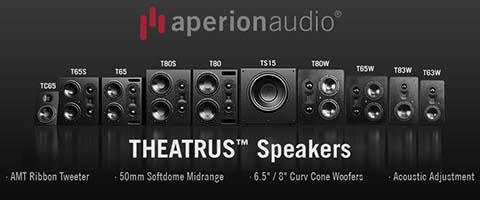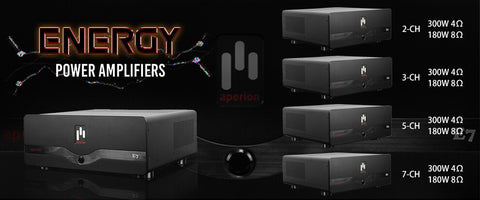Getting into downloading music can be intimidating with all of the different formats that are out there, which is why we’ve put together this handy guide to help familiarize you with some of the options. We’ll take you through the best format to download digital music as well as the pros and cons of each.
- - - - - - - - - - - - - - - - - - - - - - - - - - - - - - - - - - - - - - - - - - - - - - - - - - - - - - - - - - - - - - - -
What Does Bit Rate Mean?
Mp3 is still the most popular format for digital music. When we talk about downloading music in the mp3, it’s all about the bit rate. You probably know that computers use zeroes and ones to represent data, and a bit is a single zero or one. The bit rate of an mp3 refers to how many of those zeroes and ones per unit time are processed both when the track was encoded and when it’s decoded or played back. The more bits per unit time, or the higher the bit rate, the closer the mp3 will sound to the original wave form that it represents. When the bit rate is too low, the mp3 will have what is called artifacts, that is it will introduce noise that wasn’t present in the source material and basically ends up sounding like your music is coming out of a digital toilet instead of a speaker, and that’s not good.
The highest bit rate that is available for mp3 is 320,000 bits per second, or 320 kbps for short. By comparison, CD quality is about 1400 kbps. While a higher bit rate mp3 will give you superior sound quality, the interesting thing is that most people can’t tell the difference between a 256 kbps mp3 and CD quality, and practically no one can with a 320 kbps file in a double blind test.
For fun, you can try comparing different bit rates or formats of the same track at home to see if you can tell the difference. Although if you really want to nerd out, you should have someone play them back for you so you don’t know which you are hearing.
- - - - - - - - - - - - - - - - - - - - - - - - - - - - - - - - - - - - - - - - - - - - - - - - - - - - - - - - - - - - - - - -
Constant vs. Variable Bit Rate
In addition to a constant bit rate, like the ones we have been discussing where the bit rate stays the same, there are also variable bit rates. With a variable bit rate, the bit rate changes depending upon the complexity of the source material. If you imagine a full orchestra all playing at once versus a solo acoustic guitar, the orchestra is going to require a higher bit rate to sound faithful to the source because the waveform is more complex and contains more sonic information. So with variable bit rates the bit rate decreases when less information is required to give an accurate representation of the wave form. The highest bit rate variable files are sometimes called V0 for short. Typically a V0 file will have an average bit rate somewhere around 225 kbps, but as you might guessed from the name, it varies.
- - - - - - - - - - - - - - - - - - - - - - - - - - - - - - - - - - - - - - - - - - - - - - - - - - - - - - - - - - - - - - - -
Lossless and Lossy Formats
Mp3 is what is called a “lossy” format, which means that as the waveform is compressed some of the information is omitted as the mp3 is encoded. As I mentioned this isn’t so much of an issue with 256 and 320 kbps bit rates because the mp3 is close enough to the original waveform that our ears have trouble picking out the missing frequencies. That said, there are lossless formats where the file will be an exact copy of the source. One popular lossless format is FLAC. Even though FLAC is lossless and you don’t lose any fidelity from the original source it is still compressed. The way it works is that the file is uncompressed as it is played by the software you use for playback. Since it is compressed, the file is about two thirds of the size of an uncompressed wave file. However FLAC files are still quite large. A typical album in mp3 at 320 kbps will take up around 120 MB of space, whereas an album in FLAC will be in the vicinity of 400 MB. The drastic difference in size is because the FLAC files are at a much higher bit rate, which means more data per unit time.
So one advantage to mp3 is that they will take up less space on your computer, ipod, phone or wherever you store your music. Another drawback to FLAC is that it is not supported by iTunes, however Apple has their own version which is called ALAC. There are a couple popular media player software options that do support FLAC are Foobar2000 and Winamp and both are free. Checkout the user interface of Foobar2000 below:
These days storage is not as much as an issue as it was before with hard drive sizes becoming larger and larger. Basically you want to download the file the highest available bit rate that you have space for and that will be compatible with your playback method whether it’s a physical media player like an ipod or software like itunes or windows media player. If you do go with mp3 we recommend a bit rate of 256 kbps or 320 kbps.
AAC is another lossy format like mp3 and it actually offers better sound than mp3 at the same bit rate. AAC is used by iTunes and is also what you are listening to when you watch Youtube videos or play games on a Nintendo DS or Play Station 3. The quality of a 256 kbps AAC file should be close to that of a 320 kbps mp3 file but it will take up less space, so if you go with a lossy format, AAC is a great option. AAC also supports bit rates up to 320 kbps just like mp3.
Ogg Vorbis is yet another lossy compression scheme that is supposed to have better sound than both mp3 and AAC. Ogg has been around since the 90s but it’s never really caught on, probably because of its awful name, which kind of makes it the Beta-max of digital music. Since it’s not that popular, it isn’t supported by iTunes or Windows Media Player, but it is supported by apps built on the Android platform.
That wraps up our look at the different formats available for downloading music, we hope you enjoyed it. In the next blog, we will tackle some of the different sites and places where you can download music legally. Thanks for reading and as always, trust your ears!

Complete Your Sound System Solution

Sign up for our newsletter below, and join our social media groups to stay up to date with the latest news and information from Aperion Audio!
 |
 |








 https://www.aperionaudio.com
https://www.aperionaudio.com
1 comment
Great Article! Thank you for sharing this is a very informative post, and looking forward to the latest one